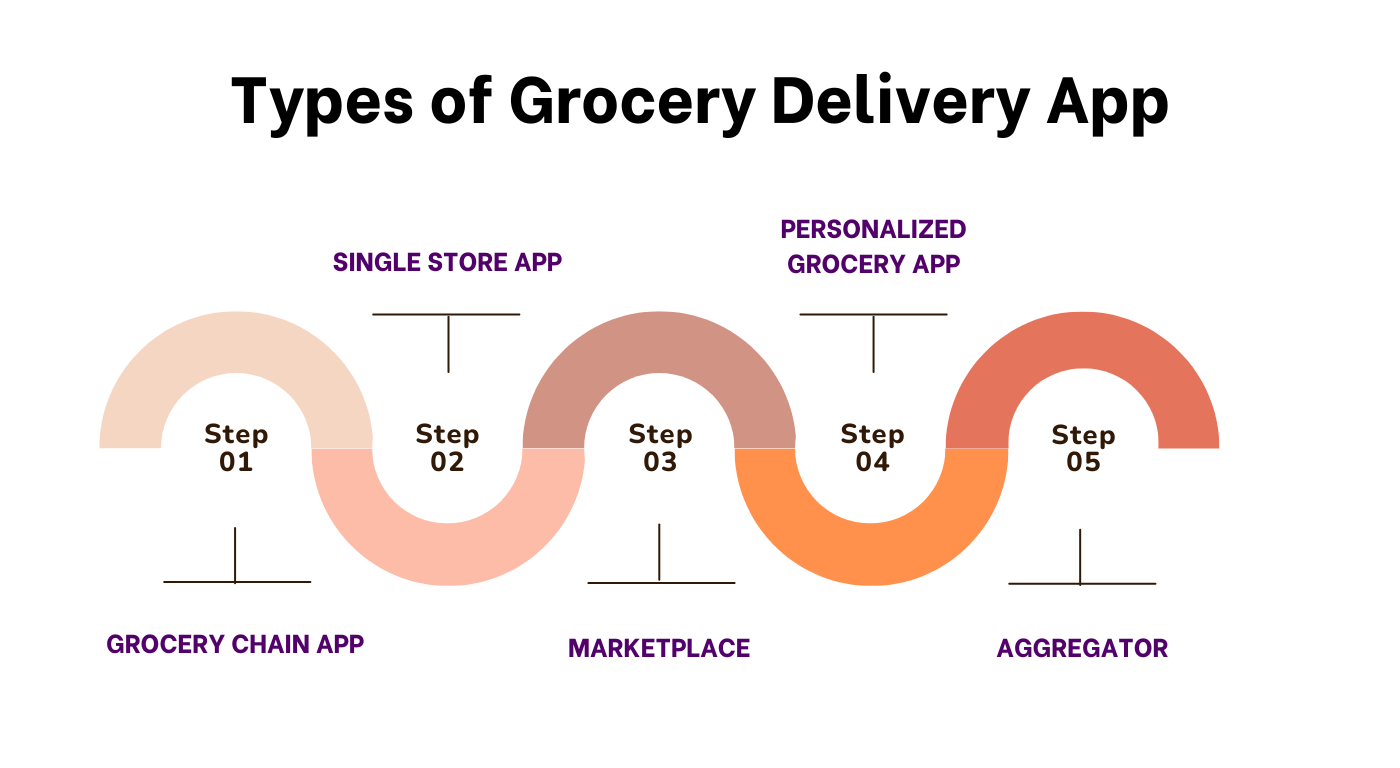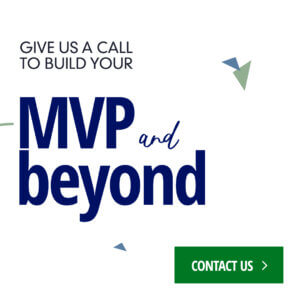Table of Contents
This comprehensive guide offers a step-by-step approach to the grocery store app development process, covering everything from initial planning and market analysis to design, development, and deployment. It explores the core features required in a modern grocery app, including real-time order tracking, user authentication, payment integration, and inventory management, ensuring a smooth and efficient user experience.
Whether you’re a startup or an established business, this resource provides practical insights and proven strategies to help you build grocery delivery app that meets customer demands and scales effectively. It also covers the latest technology stacks, development tools, and best practices to ensure your app remains competitive in the fast-growing online grocery market.
Grocery Delivery App Ideas for Businesses Based on Types.
Get grocery delivery app ideas tailored to different business models—from local shops to large grocery chains. This helps retailers choose the right features and strategy to meet customer needs and market trends.
Working with a skilled app development agency makes it easier to build a scalable, user-friendly app that supports business growth and smooth operations in the online grocery market.
Single Store App
Considering you own a single grocery store, you must focus on custom grocery delivery app development to represent your small business digitally. It assists in updating your brick-and-mortar store’s inventory, managing store-specific operations, and delivering items directly to your customers—much like what retailers such as Walmart, Target, and Kroger offer.
Grocery Chain App
This grocery chain app is the most promising if you possess a chain of grocery stores. It is implied to be like a single-store app, but there needs to be a considerable discrepancy in that this app obscures an expansive location for grocery order delivery. One of the superlative models of grocery chain apps is Zepto and Amazon Fresh, which possess numerous stores in distinct places.
Personalized Grocery App
These apps deliver a tailored user experience by offering products based on personal preferences. With features like shopping lists, recurring deliveries, and reminders, grocery delivery app solutions focused on personalization can significantly improve retention and user satisfaction.
Marketplace
Creating a virtual grocery marketplace requires a team of delivery agents and the integration of multiple vendors. Apps like DoorDash have succeeded by tapping into this lucrative business model through on demand grocery delivery app development.
Aggregator
You can construct a grocery aggregator app to assemble all the comparative grocery stores for the grocery app users. They can determine any stockpile and buy groceries based on their preference. The individual store authorizes the order and supplies the groceries to the user’s doorstep. You must create a shopping app development and qualify numerous grocery stores to enlist.

Must-Have Functionalities for Grocery Delivery App
- Personalized User Experience
- Real-Time Order Tracking
- Multiple Payment Options
- Subscription and Loyalty Programs
- Smart Inventory Management
- In-App Chat and Support
- Scheduled Deliveries
- Push Notifications and Promotions
- Multi-Store Integration
- Voice Search and Smart Filters
Step-By-Step Grocery Delivery App Development Process
Step 1: Draft a Strategy
Every successful project starts with a solid plan. At this stage, a grocery app development company focuses on identifying your target audience, analyzing their location and shopping behavior, and researching the latest tech trends. This helps set the foundation for a smart and effective app strategy.
Step 2: Build a Prototype
Next, a basic version of the app (prototype) is created and tested with a select group of users. This step is key in on-demand grocery delivery app development, as it helps gather valuable feedback and improve the app before full development begins.
Step 3: Develop and Test
Now it’s time for developers to bring your grocery app to life. Using agile methods, the team writes the code and builds out features. Testers then check every part of the app to ensure it works smoothly and is bug-free.
Step 4: Pilot Launch
A small-scale launch is done to see how the app performs in real-world conditions. During this phase, updates can be made quickly based on user interaction. An experienced grocery app developers ensures the app is easy to update and improve over time.
Step 5: Maintenance
After launch, regular monitoring and updates are essential. This stage focuses on user feedback, performance improvements, and keeping the app running efficiently. Ongoing maintenance ensures your on-demand grocery delivery app stays relevant and competitive.
Tech Stack for Grocery Delivery App Development
Choosing the right tech stack is crucial for building a reliable and scalable grocery delivery app. A solid tech foundation supports smooth performance, fast delivery, and great user experience—all essential for successful on-demand app development. From frontend frameworks to backend infrastructure, each component plays a key role in ensuring your app runs efficiently and can handle user demands in real time.
| Component | Technologies/Tools | Purpose |
| Frontend | React Native, Flutter, Swift, Kotlin | Building responsive user interfaces |
| Backend | Node.js, Django, Laravel | Handling business logic and APIs |
| Database | PostgreSQL, MongoDB, MySQL | Storing user data, orders, inventory |
| Cloud Hosting | AWS, Google Cloud, Microsoft Azure | Hosting the app and handling scalability |
| Real-Time Data | Firebase, Socket.io | Live tracking and updates |
| Payments | Stripe, Razorpay, PayPal | Secure online transactions |
| Notifications | Firebase Cloud Messaging, OneSignal | Sending alerts and updates to users |
| Location | Google Maps API, Mapbox | GPS tracking and delivery routing |
Cost for Developing a Grocery Delivery App
The app development cost can vary based on several factors such as features, design complexity, platform (iOS/Android), and the development team’s location. Whether you’re a startup or an established retailer, it’s important to understand the expected grocery delivery app development cost to plan your budget efficiently. This is especially true for businesses entering online grocery app development or expanding into the growing market of grocery delivery apps in US.
If you’re comparing ecommerce app development cost, grocery-specific apps often require added features like real-time tracking, inventory management, and payment integration, which can affect pricing. Here’s a location-based breakdown to help you estimate your development investment:
Grocery App Development Cost by Region
| Region | Hourly Rate (USD) | Estimated Cost (USD) |
| North America | $100 – $180 | $80,000 – $150,000 |
| Western Europe | $70 – $130 | $60,000 – $120,000 |
| Eastern Europe | $40 – $80 | $30,000 – $70,000 |
| India | $20 – $50 | $15,000 – $40,000 |
| Southeast Asia | $25 – $60 | $20,000 – $50,000 |
| Australia | $80 – $120 | $70,000 – $130,000 |
| Middle East | $40 – $90 | $30,000 – $75,000 |
Grocery Delivery App Platform and Technology
Choosing the right platform is a crucial step in grocery mobile app development. Businesses can opt for Android, iOS, or cross-platform solutions depending on their target audience. This choice impacts performance, user experience, and development costs.
For on-demand grocery delivery app development, technology selection plays a key role. Using modern frameworks like React Native or Flutter ensures faster development and smooth functionality. Backend technologies like Node.js or Django help manage orders, inventory, and user data efficiently.
To build a grocery delivery app that scales well, cloud platforms like AWS or Google Cloud are commonly used. APIs for maps, payments, and notifications add advanced features. These technologies work together to deliver a reliable and high-performing grocery app.
Why Launching a Grocery Delivery App Is a Smart Business Move
Partnering with a reliable ecommerce app development company to launch a grocery delivery app can give your business a competitive edge in today’s digital-first economy. It opens up new revenue streams, improves customer convenience, and supports the growing demand for online shopping. Whether you’re a startup or an established retailer, this strategic move helps you stay relevant and profitable.

- Reduces Goods Wastage
Smart inventory systems prevent overstocking and spoilage, helping businesses operate more efficiently. - Boosts the Global Economy
Encourages digital trade, job creation, and cross-border commerce through tech-driven grocery solutions. - Empowers Startups & Small Sellers
Entry-level digital solutions enable small vendors to compete effectively, making the ecommerce app development cost a worthwhile investment for long-term growth. - Ensures Fast Delivery
Streamlined logistics and real-time tracking improve customer satisfaction and delivery reliability.
Determining AppsChopper as Your Trusted Grocery Delivery App Development Company
At AppsChopper, a grocery delivery app development agency, we use agile methodology to build sophisticated grocery delivery end products. Our grocery delivery app developer can assist your grocery-centric business with the most progressive mobile app and solutions technologies.
To build an app like Instacart, you must choose a leading pioneer in the development field. With 200+ experts and valuable insights in the grocery delivery app market, we bring in the exceptional for you.
Frequently Asked Questions
Q. How much does it cost to on demand grocery app development?
A. The cost of on-demand grocery app development ranges from $10,000 to $50,000+, depending on features, platform (iOS/Android), design complexity, and developer location.
Q. What technologies are commonly used in grocery app development?
A. To apprehend the technologies to be used in grocery app development, you must take a look at the section mentioned above in the blog.
Q. How much does it cost to develop a grocery app?
A. The cost to develop a grocery app lies between the range of $15,000 to $150,000 based on the factors like the grocery app size, the platform used, and the experience of grocery app developers.
Q. Can I integrate third-party delivery services into my grocery app?
A. Yes, you can easily integrate third-party delivery services into your grocery app with the assistance of your chosen grocery app development agency.
Q. How do I maintain data security and privacy in my grocery app?
A. To maintain data security and privacy, you must hire professionals adept at all the guidelines like the GDPR and others that align with your region.








